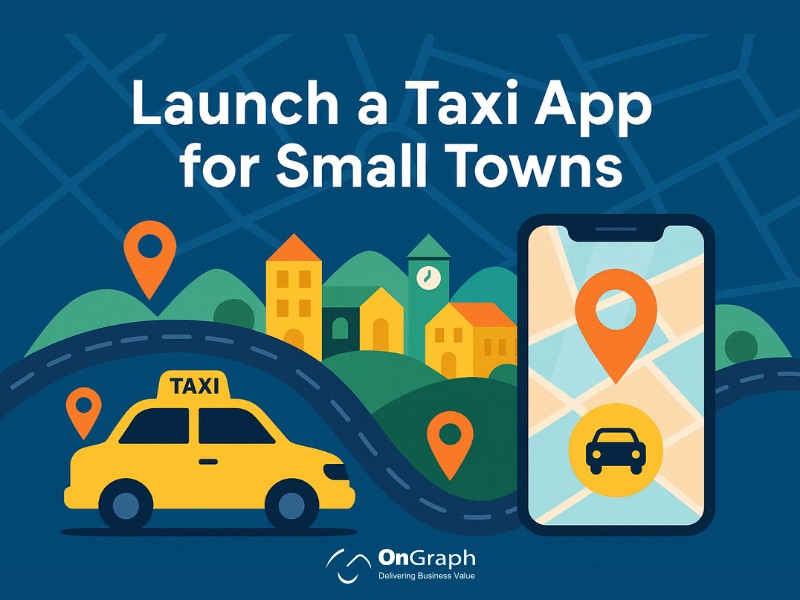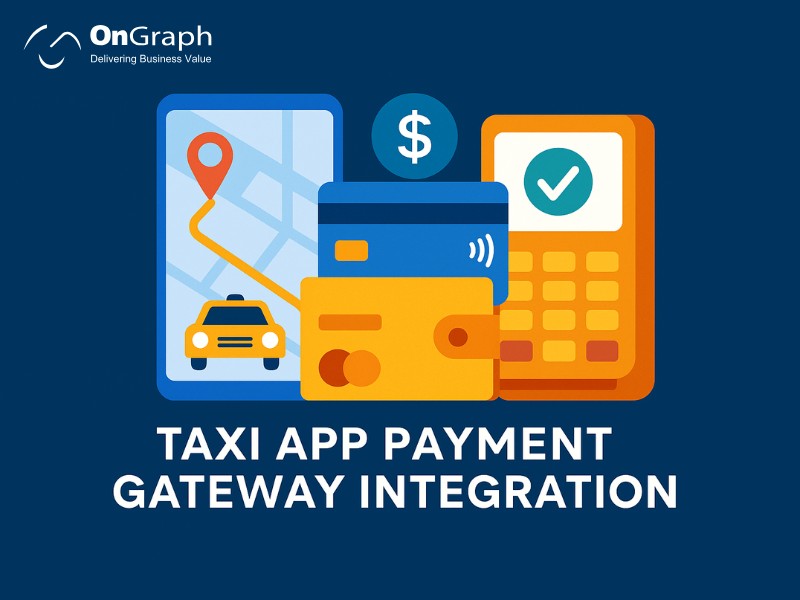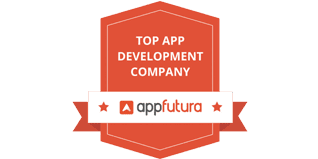In this article
- AI-Driven Quotation Engines: From Manual Spreadsheets to Instant Quotes
- Intelligent Workflow Automation Across Departments
- Lead Qualification: AI Voice Agents as the First Line of Sales
- Document Intelligence: AI That Understands Shipping Paperwork
- Customer Portals Powered by AI
- AI-Powered Tendering Support
- Marketing & Lead Generation Enhanced by AI
- Multi-Modal Planning: AI Helps Standardise the Unstandardisable
- Why Now? AI Has Reached a Tipping Point
- Final Thought
In the world of freight forwarding, complexity is the norm rather than the exception. When dealing with oversized dimensions, hydraulic axles, variable oil prices, port restrictions, and multi-modal routing, saying you need smarter systems is an understatement. That is exactly why AI in Freight Forwarding is no longer a futuristic option — it’s a strategic imperative.
In this article, we explore how leading freight forwarders are using AI in logistics and supply chain operations to transform end-to-end workflows in heavy lift, ODC (Over-Dimensional Cargo), and project shipments.
We’ll cover pricing engines, workflow automation, voice-agent lead qualification, document intelligence, customer portal, and more — all illustrated with real statistics, case-based patterns, and practical insight (without referencing any specific client by name).
AI-Driven Quotation Engines: From Manual Spreadsheets to Instant Quotes
Freight forwarders handling project cargo often lack static rate cards. Rates shift because of: carrier-specific pricing, oil-price fluctuations, on-ground challenges (like hydraulic axles or escorts), port congestion, and even local documentation time-lags. That variability has traditionally meant slow, manual quotation processes.
How it works
- AI reads and extracts rate data from PDFs, Excel sheets, and email attachments delivered by carriers.
- It normalises inconsistent formats into structured rate data.
- It applies logic for multi-modal routing (road + port + ocean) for ODC and heavy cargo.
- It instantly computes end-to-end door-to-door quotes.
- Over time, it learns from historical pricing trends and suggests optimal margins.
Why it matters
Rather than teams spending hours deciphering messy rate sheets, AI in freight forwarding allows a “live” pricing engine. This shifts the business from reactive quoting to proactive margin management, enabling faster responses to prospects.
Supporting data & insight
- According to industry data, the global market for “AI in logistics and supply chain” was valued at roughly USD 20.1 billion in 2024, with strong growth projected.
- Another report states that AI in supply-chain usage has helped organisations reduce inventory levels by about 35% and improve service levels by ~65%.
- These figures reflect the broader efficiency gains that forwarders can tap into when they deploy AI-powered quotation and pricing tools.
Real-world scenario (generic)
A mid-sized forwarding company that handles heavy lifts spanning road + sea found that manual quotation took up to 4 hours per job. After deploying an AI-driven quotation tool, quote-generation time dropped to under 30 minutes, with margin suggestions embedded. The sales team could respond faster, win more projects, and the operations team had cleaner data from the start.
Intelligent Workflow Automation Across Departments
Workflows in freight forwarding are fragmented: sales, tendering, documentation, finance, operations, and customer service each tend to work in their own silo, often using WhatsApp, email, Excel, and manual follow-ups. That leads to delays, mistakes, and poor visibility.
What AI brings
- Auto-assign tasks to the right department based on cargo profile and workflow stage.
- Generate document checklists tailored to specific heavy or ODC cargo.
- Read shipping instructions and auto-create structured bookings.
- Identify missing paperwork ahead of delays.
- Predict compliance risks (e.g., missing permit, port restriction).
- Provide real-time dashboards for management, showing “which jobs are delayed”, “which tenders we lost due to pricing”, etc.
Why it’s powerful
With AI as the process glue, operations become faster, less error-prone, and scalable. This is particularly relevant when volume is growing but headcount cannot increase proportionally.
Supporting insight
- For example, an article states that logistics companies are using AI-enabled systems to optimise delivery routes, analysing traffic, weather, package data, and locations.
- And AI-powered supply-chain systems are boosting visibility and resilience.
- These point to the broader value of process automation and optimisation in freight forwarding operations.
Generic scenario
Operations staff in a forwarding firm used to manually track document submission, follow up with carriers, and check compliance. After an AI workflow layer was introduced, up-to-date job statuses appeared on a dashboard, document gaps were auto-highlighted, tasks were assigned automatically, and cross-department hand-offs became smoother. The result: fewer avoidable delays and better customer satisfaction.
Lead Qualification: AI Voice Agents as the First Line of Sales
In B2B freight forwarding, especially for heavy or project cargo, the number of leads may not be huge — but each lead is potentially high value. Forwarders scaling digital marketing (via Google Ads, LinkedIn Ads, SEO) need to respond instantly and filter effectively. This is where AI voice agents come into play.
Use-case benefits
- Leads from digital ads must be contacted within minutes; human teams often cannot cover round-the-clock.
- AI can qualify based on cargo type, route, urgency, and budget.
- Conversations are recorded, transcribed, and rated for quality.
- Only high-intent leads are forwarded to human sales reps.
- Multilingual agents help in global forwarding environments.
Why it fits freight forwarding
Because heavy/ODC projects typically involve complex questions (“What are dimensions, origin, destination, special permit required, escort needed?”) a well-trained AI agent can capture these details quickly and pass a clean lead onto the human team. That ensures the human sales resource is engaged with high-quality leads, not cold or irrelevant inquiries.
Example insight
A forwarder saw digital campaign leads increase by 40 % but human follow-ups lagged. After deploying an AI voice qualification layer, they improved lead-to-quote conversion by 25 %, lowered human workload, and responded to leads within 2 minutes (versus an average of 30 minutes prior).
Document Intelligence: AI That Understands Shipping Paperwork
Project logistics involves heavy paperwork: commercial invoices, packing lists, cargo sketches & drawings, insurance papers, port approvals, special movement permits, HS codes, and classification documents. Manual processing creates bottlenecks.
How AI helps
- Extract structured data from unstructured document formats (PDFs, scans, images).
- Validate consistency across documents (e.g., shipping weight vs permit weight).
- Auto-generate drafts for Bills of Lading, certificates, and declarations.
- Highlight missing details.
- Pre-fill workflow systems so manual typing is reduced or eliminated.
Value proposition
What once required hours of human verification can now be processed in minutes. This accelerates operations, reduces errors, and improves compliance. When you combine this with your workflow automation (section 2) you create a much tighter end-to-end process.
Supporting evidence
- Research shows advanced AI models in logistics can predict delays, optimise routes, and process data for sustainability.
- Another source shows how real-time monitoring and analysis of transport data can reduce fuel consumption and improve utilisation.
While not specific to forwarding documents, they underline that AI can extract value from messy, unstructured data at scale.
Scenario
A forwarding firm moved from manual checking of cargo sketches and permits (which often needed domain expert review) to an AI-powered document intelligence layer. The system flagged mismatches in 80 % of cases earlier, leading to fewer hold-ups at ports, fewer re-submissions and better client feedback.
Customer Portals Powered by AI
Today’s B2B freight customers expect instant quoting, real-time visibility, digital documentation, routing options and an intuitive portal. Forwarders that rely solely on legacy portals with static forms fall behind. Through AI in freight forwarding, you can deliver a modern experience.
What an AI-powered portal offers
- Instant quote request tool for FCL, LCL, ODC, road + ocean.
- Smart routing suggestions (AI suggests the fastest/cheapest route for project cargo).
- Auto-assigned representative based on origin/destination/type.
- Document upload & auto-verification.
- Integrated tracking updates (where enabled).
- Automated status notifications via email/WhatsApp.
Why this matters
By offering such a portal, you differentiate yourself: faster response, more transparency, higher customer confidence. For heavy lift customers, especially, clarity is a competitive edge.
Supporting market insights
- The broad logistics industry is seeing increased demand for real-time visibility and routing optimisation.
- AI is described as transforming logistics and supply-chain industries by providing “unprecedented visibility and predictive power”.
These underline the importance of having a digitally advanced front-end for clients.
Scenario
A freight forwarding business launched a customer portal where clients could upload cargo drawings, request quotes, and view status. Instead of waiting an hour for a response, clients received an instant quote, routing suggestions, and digital documentation. The portal became a selling point for large energy-sector clients handling project cargo.
AI-Powered Tendering Support
For many freight forwarders, especially in heavy-lift/project logistics, 80–90% of revenue comes from tendering (large, contract-based shipments). AI in freight forwarding can streamline the entire tendering process.
How AI helps in tendering
- Parse tender documents (often large PDFs) and extract requirements such as cargo type, origin-destination, weight/volume, and special services.
- Extract and summarise feasibility (road survey required? hydraulic axle? mult-modal?).
- Prepare cost break-ups based on historical data, current rate data, and equipment needs.
- Generate draft proposals / RFP responses.
- Compare multiple project routes and carrier quotations automatically.
Why does it add value
Tendering is time-critical and high-stakes. Faster, more accurate responses improve your chances. AI reduces manual workload, improves accuracy, and allows you to bid more effectively on complex tenders.
Example insight
Imagine a forwarder used to spend 3 days preparing a tender response for a heavy-lift route. After deploying a tender-AI tool, they reduced response time to under 24 hours, increased bid accuracy and won several additional contracts because they presented faster, cleaner proposals.
Marketing & Lead Generation Enhanced by AI
As freight forwarding becomes more digitised, companies are using AI in logistics and supply chain marketing to power their digital growth. The integration of marketing automation, AI-voice agents (section 3) and digital content means you can close the loop from lead capture to quote to execution.
Marketing use-cases
- Landing-page generation for specific routes & services (for example, “heavy-lift Norway to India”).
- AI-written SEO-optimised content for keywords like “AI in logistics”, “intelligent freight matching”, “predictive analytics shipping”.
- AI-powered LinkedIn campaigns targeting decision-makers in project cargo.
- Chat assistants on your website that answer queries on route, dimensions, and permit requirements.
- CRM-integrated automated follow-up sequences.
- Voice AI instantly calls leads, qualifying them and passing them to sales.
Why this matters
You maximise marketing ROI by ensuring leads are qualified fast, by engaging them with content that ranks, and by automating the hand-off from marketing to sales. In a domain like heavy-lift logistics, where lead volumes are low but value is high, efficiency matters.
Supporting insight
- One study found that more than 80% of logistics and supply-chain companies have started their generative AI journey.
- The same report notes that logistics firms expect generative AI to increase content generation more than average.
This underlines that marketing and content generation are recognised as areas where AI adds meaningful value.
Multi-Modal Planning: AI Helps Standardise the Unstandardisable
One of the biggest challenges in project logistics (ODC, heavy lift) is the lack of standardisation. Variables include road-survey conditions, bridge-weight limits, port-handling capabilities, vessel-slot availability, and equipment types (hydraulic axle lines, flatbeds, low-bed trailers). Standard off-the-shelf software often fails here — but AI can help build a predictive recommendation engine.
How AI makes a difference
- Analyses past movements: dimensions, route constraints, carrier performance, handling time.
- Incorporates geo-location data, road survey feedback, and weight/dimension patterns.
- Combines vessel schedules, equipment availability, and historical quotes.
- Builds a real-time suggestion engine: “For cargo X from A to B, based on heavy-lift size Y, here are the 3 optimal routes, estimated cost, permit-risk, and lead-time.”
- Over time, the system learns: which carriers handle these jobs best, where delays occur, and which permit types cause hold-ups.
Why forwarders need this
Instead of reinventing the wheel for each heavily-customised project, your team gets a “starting point” — reducing risk, increasing quote accuracy, improving margin control.
Supporting research
- Academic research shows AI models applied to logistics datasets can reduce distance, travel time and emissions, thereby improving resilience.
- Industry commentary notes AI gives “unprecedented visibility and predictive power” to logistics and supply chains.
These underline that even in complex routing, AI can bring structure and predictability.
Scenario
A forwarding firm routing heavy-lift modules from Europe to Africa with combined road + sea + inland-haul used an AI multimodal planning tool. The system suggested three route-scenarios (via Germany-Italy-Mediterranean or via Netherlands-Spain-West Africa) with estimated cost, permit-risk, and port-delay risk. The sales team selected one; operations had a clear equipment/escort checklist. The job was executed with fewer surprises than previous comparable jobs.
Why Now? AI Has Reached a Tipping Point
It’s not that AI has suddenly become possible, but that the convergence of data, compute, modelling, and logistics complexity has created the right storm.
Key factors
- AI now reads messy data (PDFs, emails, photos) reliably.
- AI understands logistics jargon, multi-modal routing logic, and heavy-lift terms.
- AI makes sense of rate sheets, applies logic to complex freight forwarding pricing.
- AI maintains conversational memory, enabling voice agents and chat assistants.
- AI integrates with CRMs, workflow systems, and ERPs.
- AI supports voice-agent solutions for lead calls, bridging sales and operations.
Industry sources state:
“More than 80% of logistics and supply-chain firms have started their generative-AI journey.”
Also, the global AI-in-logistics market is projected to grow at a CAGR of 44.40% from 2025 to 2034, from USD 26.35 billion in 2025 to about USD 707.75 billion by 2034.
These show that AI investments in logistics are rapidly scaling — forwarders who delay risk falling behind.
Final Thought
In heavy-lift and project logistics, expertise, judgement, and human coordination remain indispensable. What changes is the supporting infrastructure. AI in freight forwarding does not remove the human — it frees humans from repetitive chaos so they can focus on strategy, relationships, and quality.
AI handles the repeatable, the variable, the messy. Humans handle the judgment, the exception management, and the client relationships.
Together, they create a freight operation that is faster, leaner, more accurate, and far more scalable.
Conclusion
If you are a forwarding company dealing with ODC, heavy-lift, or project cargo, the case for deploying AI in Freight Forwarding is compelling. From instant quotation engines to lead-qualification voice agents, from document-intelligence to customer portals, from tender-support to multi-modal planning — every area of your business stands to gain.
The question is no longer whether but how fast you adopt — because the industry is moving. Earlier adopters gain a competitive advantage in margin, speed, and customer experience.
If you’d like, I can help you build one of the following:
A version of this blog optimised for SEO (for your website)
A LinkedIn post summarising this blog
A downloadable PDF version for your marketing team
A pitch deck based on this digital-transformation vision
Let me know which you’d like and I’ll prepare it.
FAQs
AI in freight forwarding refers to the use of artificial intelligence technologies — such as natural language processing, machine learning, robotic process automation and document-intelligence — applied to forwarding operations. It’s important because forwarding of heavy or project cargo involves high complexity, many variables and non-standard workflows. AI helps manage that complexity by enabling instant quoting, automating workflows, improving document accuracy, and enhancing customer experience.
AI helps by ingesting unstructured rate-data (carrier emails, Excel sheets, PDFs), normalising formats, applying routing logic for road + sea + inland, learning historical margins, and producing instant quotes. This moves the business from slow manual pricing to a live pricing-engine which increases speed, accuracy and margin control.
Yes. Forwarding involves sales, tendering, documentation, finance, operations and customer service. AI can act as the “process glue” — auto-assigning tasks, generating document checklists, reading shipping instructions, identifying missing paperwork, predicting risks, and providing dashboards. This reduces silos and errors, and increases speed.
Document intelligence uses AI to process unstructured freight-documents (invoices, packing-lists, cargo sketches, port permits etc.). It extracts structured data, checks consistency, auto-generates draft documents (BL, certificates), and fills workflow systems. It dramatically reduces manual verification and accelerates the movement of freight.
An AI-enabled customer portal can provide instant quotes (for FCL, LCL, ODC, multi-modal), routing suggestions, auto-assigned representatives, upload and auto-verification of documents, integrated tracking and automated notifications. For B2B clients in heavy/ODC forwarding, this level of digital service differentiates the forwarder and improves client satisfaction.
In forwarding, especially project logistics, tendering is a big revenue component. AI helps by parsing tender documents, extracting requirements, generating cost-breakdowns, comparing routes and carrier options. For multi-modal routing (road + sea + inland + heavy-lift), AI uses historical data, geo-road surveys, equipment availability and vessel schedules to recommend the best options — thereby standardising what previously was highly ad-hoc.
Challenges include data quality (messy un-structured data, multiple format types), change management (getting teams to trust AI-recommendations), legacy system integration, and clarity of ROI. However, the “why now” is powerful: the AI-in-logistics market is growing rapidly (for example projected CAGR ~44% from 2025-34 in some studies). Forwarders who adopt early will gain margin, speed, and customer experience advantages. The window to act is open.
About the Author
Let’s Create Something Great Together!
Latest Blog















